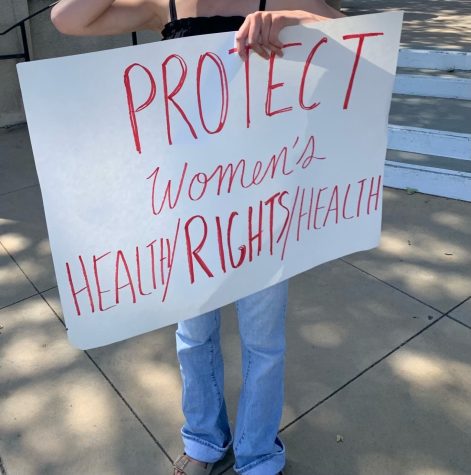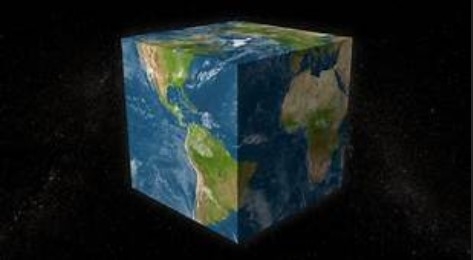The Answer to a Post-Fossil Fuels World is Nuclear Energy
The recent climate summit at Glasgow has echoed the obvious: most intelligent people acknowledge the existence of climate change and that countries need to slowly transition away from fossil fuels. The conversation usually ends here, with a call to shift away to renewable energy. Some would go as far as to support a 100% shift to renewables by 2030 as the Green New Deal proposal suggests. Unfortunately for advocates of renewable energy, it is not the best answer to a post-fossil fuels world that this country desperately needs and Americans should be looking to nuclear energy as the energy source of the future.
When people think of nuclear energy, they often think of the Springfield Nuclear Power Plant from “The Simpsons” blowing up and threatening to bring Armageddon. This is due in large part to incompetent bozos like Homer Simpson and malicious capitalists like Mr. Burns. Thanks to the connotation with the nuclear bomb and environmentalists and incompetent politicians Americans have a very warped image of the energy source. The truth about nuclear energy is actually very different.
Nuclear is a zero-emission clean energy source. It generates power through fission, which is the process of splitting uranium atoms to produce energy. According to the Nuclear Energy Institute (NEI), the United States avoided more than 476 million metric tons of carbon dioxide emissions in 2019 by utilizing nuclear energy. That is the equivalent of removing 100 million cars from the road and more than all other clean energy sources combined.
Successful opposition to nuclear energy by environmentalists has actually had negative impacts on the environment. According to data published by Vermont’s Department of Environmental Conservation, the state’s emissions rose 16.3% the summer of 2015, which was the same summer that Vermont Yankee’s carbon-free nuclear energy source was cut to 0%. This was twice as much as national emissions rose during the same period. Meanwhile, Vermont’s per capita emissions rose 5% while U.S. per capita emissions declined by 17%.
Renewable energy also has a lot of major issues both in terms of space, reliability, and environmental effects. The NEI says wind farms require 360 times more land area to produce the same amount of electricity and solar photovoltaic plants require 75 times more space as nuclear does. To put that in perspective, one would need more than 3 million solar panels to produce the same amount of power as a typical commercial reactor or more than 430 wind turbines, with capacity factor not included. Renewable energy also relies on fickle factors like the sun and wind, so lithium batteries are also required. It is also common knowledge that lithium mining is terrible for the environment and emits a lot of CO2. On the other hand, nuclear energy has much more energy density, and despite controversial claims, is proven to be the most reliable and cheap source of clean energy.
Nuclear energy is a solution of reliability for the American people. A Yale Study earlier this year concluded that In the United States in 2016, nuclear power plants, which generated almost 20 percent of U.S. electricity, had an average capacity factor of 92.3 percent, meaning they operated at full power on 336 out of 365 days per year. In contrast, wind turbines delivered energy 34.5 percent of the time and solar electricity arrays only 25.1 percent of the time. Even plants powered with coal or natural gas only generate electricity about half the time for reasons such as fuel costs and seasonal and nocturnal variations in demand. Nuclear is a clear winner on reliability.
A lot of people still get anxious about nuclear energy because of instances like Chernobyl, Three Mile Island, and Fukushima. However, getting the facts straight on all these events is crucial. First and foremost, Chernobyl was the only nuclear energy accident that had confirmed deaths attributed to the event and it was largely due to building planners cutting corners and ignoring safety precautions to save time, save money, and please the Soviet government. It is incredibly unlikely that an American nuclear power plant can do the same thing with strong, reasonable EPA regulations and supervision. Three Mile Island resulted in 0 deaths and contrary to the popular belief about its long term effects, there is no strong evidence that it increased cancer risk, with the risk being lower in that county than other Pennsylvania counties. Finally, the Fukushima accident caused by the 2011 Tōhoku earthquake did result in slightly higher radiation levels, but it was still lower than what is considered. Even with all these events, nuclear energy still has a death rate that is about the same as it is for renewables. Claims that any of these accidents have resulted in detrimental effects towards human health has almost always been proven false.
Nuclear energy deserves to be treated better than the outcast that it has been made out to be by environmentalists and politicians who plague it to be “atrocious.” The American people have relied too heavily upon a flawed vision promoted by environmentalists, instead of the vision for a better, cleaner future built on nuclear energy. By focusing on a more reliable solution, and turning the country “nuclear,” Americans can better prepare themselves, ourselves, and future generations from the greatest energy threat in the history of mankind.
Hello there! Our goal is to provide relavent, engaging journalism for readers of all ages. Your donation will support the student journalists of the Wolfpacket at Claremont High School, and will allow us to purchase equipment, print our monthly issues, and enter in journalism competitions. We appreciate your consideration!

Lucas Grannis is a senior at Claremont High School and a proud four-year member of the Wolfpacket staff. Rising through the ranks from reporter to assistant...












